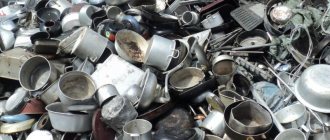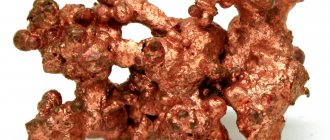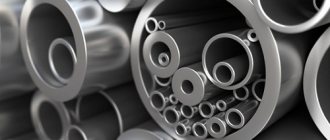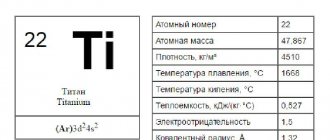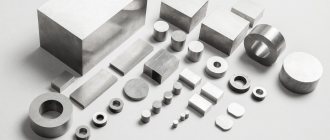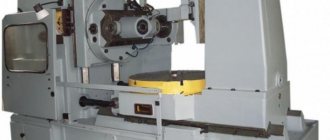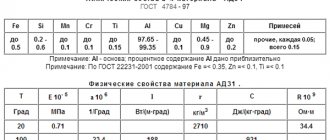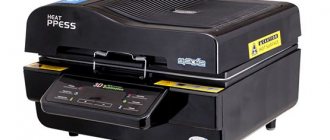Characteristics of aluminum
To understand what properties aluminum alloys have, you need to know the characteristics of the base material. It is a light and shiny metal. Aluminum conducts heat and electricity well, which is why wires and various radio components are made from it. Due to its low melting point, it is not used in highly heated structures.
Aluminum is protected on top by an oxide film, which protects the material from the destructive effects of environmental factors. In nature, this metal is found in rocks. To improve the characteristics of aluminum, other materials are added to it to create better mixtures.
The composition of aluminum and its alloys determines the characteristics of finished products. Most often, copper, manganese and magnesium are added to this metal.
The melting point of aluminum is 660 degrees Celsius. Compared to other metals, this is a low indicator, which limits the scope of the metal. To increase its heat resistance, iron is added to it. Additionally, manganese and magnesium are added to the alloy. These components increase the strength of the finished composition. The result is an alloy known as “duralumin”.
Separately, we need to talk about how magnesium affects the characteristics of the alloy:
- An aluminum alloy with a large amount of magnesium will have a high strength index. However, its corrosion resistance will be significantly reduced.
- The optimal amount of magnesium in the composition is 6%. This way you can avoid surfaces becoming rusty and cracks appearing during active use.
A mixture of manganese and aluminum makes it possible to obtain a material that cannot be processed by thermal methods. Hardening will not change the structure of the metal and its characteristics.
To achieve maximum strength without sacrificing corrosion resistance, mixtures of aluminum, zinc and magnesium are made. Alloy Features:
- The strength index can be increased using heat treatment.
- Electricity must not be passed through blanks made from this mixture. This is due to the fact that after passing current, resistance to corrosion processes will deteriorate.
- To increase resistance to the formation and development of corrosion, copper is added to the aluminum alloy.
Iron, titanium or silicon can also be added to the base material. New components change the melting point, strength index, fluidity, ductility, electrical conductivity and corrosion resistance.
Melting aluminum
Applications
BAM is commercially available and is being studied for potential applications. For example, pistons, seals and pump blades can be coated with BAM or BAM + TiB.2 to reduce friction between parts and improve wear resistance. Reducing friction would reduce energy consumption. BAM can also be applied to cutting tools. Reducing friction will reduce the force required to cut an object, extending tool life and possibly allowing higher cutting speeds. Coatings as thin as 2–3 micrometers have been found to improve efficiency and reduce wear on cutting tools.[15]
Aluminum production
In nature, aluminum can be found in rocks. Bauxite is considered the most saturated. The production of this metal can be divided into several stages:
- First of all, the ore is crushed and dried.
- The resulting mass is heated over steam.
- The treated mixture is poured into alkali. During this process, aluminum oxides are released from it.
- The composition is thoroughly mixed.
- Next, the resulting alumina is exposed to electric current. Its power reaches 400 kA.
The last step is casting aluminum into molds. At this point, various components can be added to the composition that change its characteristics.
Features of alloy classification
Aluminum-based alloys make it possible to more efficiently use the base material and expand the scope of its application. Various types of metals are used to change characteristics. Iron or titanium is rarely added.
Aluminum alloys are divided into two large groups:
- Foundries. Fluidity is improved by adding silicon to the composition. Molten metal is poured into pre-prepared molds.
- Deformable. Ingots are initially made from these mixtures, after which they are given the required shape using special equipment.
Technical aluminum is included in a separate group. It is a material that contains less than 1% of foreign impurities and components. Because of this, an oxide film forms on the surface of the metal, which protects it from environmental factors. However, the strength of technical metal is low.
Ingots are processed using different methods. It depends on what shape you want to get after processing. Technological processes:
- Rolling. The method is used in the production of foil and solid sheets.
- Forging. A technological process by which parts of complex shapes are manufactured.
- Molding. Also used for making workpieces of complex shapes.
- Pressing. This is how pipes, profiles and rods are made.
Additionally, to improve performance, the metal is subjected to heat treatment.
Extruded aluminum alloy profiles
Recommendations
- https://kundoc.com/pdf-structural-and-mechanical-properties-of-almgb-films-experimental-study-and-first.html
- https://www.thegeneticatlas.com/Kenneth-Nordtvedt-Molecular-Hardness.htm
- https://www.osti.gov/pages/servlets/purl/1458625
- ^ a b
Tian, Y.;
Bastawros, A. F.; Lo, C. C. H.; Constant, A.P.; Russell, A.M.; Cook, B.A. (2003). "Ultrahard self-lubricating AlMgB films for microelectromechanical devices". Letters in Applied Physics
.
83
(14): 2781. Bibcode:2003ApFL..83.2781T. doi:10.1063/1.1615677. - ^ a b c
V. I. Matkovich;
J. Economics (1970). "Structure of MgAlB14 and a brief critique of structural relationships in higher borides." Acta Crystallogr.
B. _
26
(5): 616–621. Doi:10.1107/S0567740870002868. - Higashi, I; Ito, T. (1983). "Structure refinement of MgAlB14". Journal of Less Common Metals
.
92
(2): 239. doi:10.1016/0022-5088(83)90490-3. - ^ a b c d
Russell, A. M.;
B. A. Cook; J. L. Harring; T. L. Lewis (2002). "Thermal expansion coefficient of AlMgB14". Scripta Materialia
.
46
(9): 629–33. Doi:10.1016/S1359-6462(02)00034-9. - ^ a b c d e
Cook, B.A.;
J. L. Harring; T. L. Lewis; A. M. Russell (2000). "A new class of superhard materials based on AlMgB14." Scripta Materialia
.
42
(6):597–602. Doi:10.1016/С1359-6462 (99) 00400-5. - ^ a b c
Tian, Y.;
Bastawros, A. F.; Lo, C. C. H.; Constant, A.P.; Russell, A. M.; Cook, B.A. (2003). "Ultrahard self-lubricating AlMgB14 films for microelectromechanical devices." Letters in Applied Physics
.
83
(14): 2781. doi:10.1063/1.1615677. - ^ a b c d f
Ahmed, A;
Bahadur, S; Cook, B; Peters, J (2006). "Study on Mechanical and Scratch Properties of New Superhard AlMgB14 Modified with TiB2." Tribology International
.
39
(2): 129. doi:10.1016/j.triboint.2005.04.012. - ^ a b
Wehrtzite, Helmut;
Kuhlman, Udo; Krach, Gunnar; Higashi, Iwami; Lundström, Torsten; Yu, Yang (1993). "Optical and electronic properties of orthorhombic borides of the MgAIB14 type". Journal of Alloys and Compounds
.
202
(1–2): 269–281. Doi:10.1016/0925-8388(93)90549-3. - Cook, B.A.; Peters, J.S.; Harringa, J.L.; Russell, A. (2011). “Increased wear resistance of AlMgB14 – TiB2 composites.” Wear
.
271
(5–6): 640. doi:10.1016/j.wear.2010.11.013. - Kurt Kleiner (November 21, 2008). “The material is smoother than Teflon, which was discovered by chance.” New scientist
. Archived from the original on December 20, 2008. Retrieved 2008-12-25. - Higdon, C.; Cook, B.; Harringa, J.; Russell, A.; Goldsmith, J.; Qu, J.; Blau, P. (2011). "Mechanisms of friction and wear in AlMgB14-TiB2 nanocoatings." Wear
.
271
(9–10): 2111. doi:10.1016/j.wear.2010.11.044. - Durable nanocoats improve industrial energy efficiency Archived 2012-05-24 in the Wayback Machine. Ames Laboratory. Press release. Ministry of Energy. November 18, 2008
Grades of aluminum and aluminum alloys
Aluminum alloys are designated according to GOST 4784-97. The state document indicates the marking of aluminum alloys, consisting of letters and numbers. Explanation:
- D - this letter stands for duralumin.
- AK - marking of aluminum alloys processed during the forging process.
- A—denotes technical material.
- AB - avial.
- AL - designation of cast metal.
- AMts is a grade of aluminum with the addition of manganese.
- B is an alloy with a high strength index.
- SAP - powders sintered in prepared molds.
- AMg - mixtures with added magnesium.
- SAS - sintered alloys.
After the letter designation there is a number that indicates the grade of aluminum. A letter is indicated after the numbers. You can read a detailed explanation of the numbers in GOST.
Types and properties of aluminum alloys
When working with this metal and mixtures based on it, it is important to know the properties of aluminum alloys. The scope of application of the material and its characteristics will depend on this. The classification of aluminum alloys is given above. The most popular types of alloys and their properties will be described below.
Aluminum-magnesium alloys
Aluminum-magnesium alloys have high strength and are easy to weld. No additional component is added to the composition more than 6%. Otherwise, the material’s resistance to corrosion processes deteriorates. To further increase strength without sacrificing corrosion protection, aluminum alloys are diluted with manganese, vanadium, chromium or silicon. For every percentage of magnesium added to the composition, the strength indicator changes by 30 MPa.
Aluminum-manganese alloys
To increase corrosion resistance, the aluminum alloy is diluted with manganese. This component further increases the strength of the product and weldability. Components that can be added to such compositions are iron and silicon.
Alloys with aluminum, copper and silicon
The second name of this material is alcusin. Grades of aluminum with the addition of copper and silicon are used to produce parts for industrial equipment. Thanks to their high technical characteristics, they can withstand constant loads.
Aluminum-copper alloys
In terms of technical characteristics, mixtures of copper and aluminum can be compared with low-carbon steels. The main disadvantage of this material is its susceptibility to the development of corrosive processes. A protective coating is applied to the parts, which protects them from environmental factors. The composition of aluminum and copper is improved using alloying additives. They are manganese, iron, magnesium and silicon.
Aluminum-copper alloys
Aluminum-silicon alloys
Such mixtures are called silumin. Additionally, these alloys are improved with sodium and lithium. Most often, silumin is used for the manufacture of decorative products.
Alloys with aluminum, zinc and magnesium
Aluminum-based alloys, to which magnesium and zinc are added, are easy to process and have a high strength index. The characteristics of the material can be increased by heat treatment. The disadvantage of a mixture of three metals is low corrosion resistance. This drawback can be corrected with the help of a copper dopant.
Avial
These alloys include aluminum, magnesium and silicon. Distinctive features - high ductility, good resistance to corrosion processes.
Magnesium corrosion
For many years, one of the main disadvantages of magnesium alloys has been corrosion. Magnesium occupies the highest anodic position in the galvanic series. Therefore, as shown in Figure 1, it may be subject to severe corrosion.
Figure 1 – Heavily corroded magnesium part [1]
Magnesium's corrosion problems are due to the strong influence of impurity elements such as iron, nickel and copper. Figure 2 shows how much the iron content of magnesium affects its susceptibility to corrosion. However, the use of high-purity magnesium alloys results in a level of corrosion resistance similar to that of competing aluminum cast alloys (Figure 3).
Figure 2 – Effect of iron content in magnesium on its corrosion resistance [1]
Figure 3 – Comparison of corrosion resistance of cast aluminum and magnesium alloys [1]
Areas of application of aluminum alloys
Areas of application of aluminum and its alloys:
- Cutlery. Aluminum utensils, forks, spoons and containers for storing liquids are still popular.
- Food industry. This metal is used as a food additive. Its designation in the composition of products is E. It is a food additive used to color confectionery products or protect products from mold.
- Rocket science. Aluminum is used to make rocket propellant.
- Military industry. An acceptable price and low specific gravity have made this metal popular in the production of parts for small arms.
- Glassmaking. This material is used in the manufacture of mirrors. This is due to its high reflectivity.
- Jewelry. Aluminum jewelry used to be very popular. However, it was gradually replaced by silver and gold.
Due to its high electrical conductivity, this metal is used for the manufacture of wires and radio components. In terms of electrical conductivity, aluminum is second only to copper and silver.
We must not forget about the small specific gravity of the material. Aluminum is considered one of the lightest types of metal. Due to this, it is used to make housings for aircraft and cars. Delving deeper into this topic, we can say that the entire aircraft consists of at least 50% of this metal.
This metal is also found in the human body.
If this component is missing, the processes of tissue growth and regeneration slow down. The person feels tired, muscle pain and increased drowsiness may appear. However, more often situations arise when this component is more than normal in the body. Because of this, a person becomes irritable and nervous. In case of excess, it is necessary to abandon cosmetics with the addition of aluminum and medications containing it. Mixtures with aluminum are common in various industries. This is due to the fact that this metal is among the top 5 most common in the world. In nature it is found in various ores. In production, the weak performance of this metal is increased by adding other components. This way you can increase resistance to corrosion processes, strength, and melting point.
Tempered glass in laptops
The rise in popularity of smartphones in the late 2000s increased interest in tempered glass—particularly Corning's patented Gorilla Glass—a new material for all types of electronics.
Modern tempered glass is amazing, including scratch resistance almost as good as synthetic sapphire. It's also relatively inexpensive to integrate into a laptop's design.
But keep in mind, tempered glass is still... glass. It may be scratch-resistant and less likely to break than regular window glass, but a drop on any hard enough surface is still capable of destroying the screen, cover, and touchpads. As a material for laptops and tablets, tempered glass is a cosmetic addition rather than a focal point.

